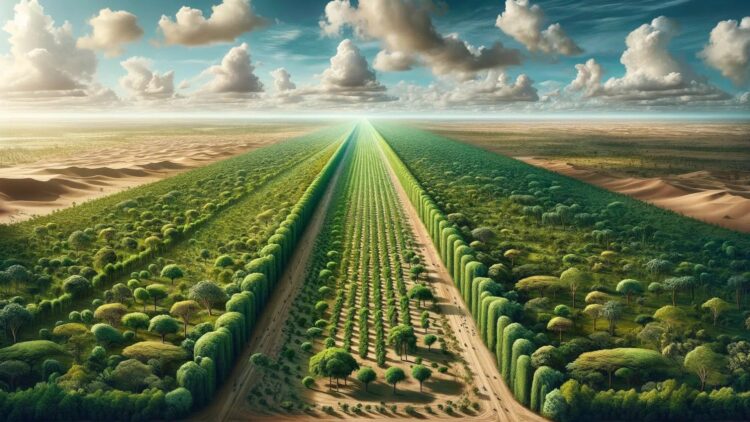For the longest time, climate change has had a detrimental effect on arable land in Africa, resulting in ecological and financial challenges such as soil erosion, reduced crop yields, shifted growing seasons, and poverty. Fortunately, a new initiative is being developed in the Sahel region of the continent. In many respects, it already promises to introduce sustainable and economic growth.
Breaking down the Great Green Wall
The Great Green Wall (GGW) initiative was first launched by the African Union in 2007. An emerald beltline stretching across 8,000 kilometers (4,970 miles) and reaching a width of 15 kilometers (nine miles), it consists of millions of diverse tree, plant, and herb species.
The GGW spans across 11 African countries in the Sahel region, which borders the continent’s vast Sahara Desert: Senegal, Mauritania, Mali, Burkina Faso, Niger, Nigeria, Chad, Sudan, Eritrea, Ethiopia, and Djibouti. In these nations, desertification, land degradation, lack of food security, and other effects of climate change are particularly rife, adversely impacting ecosystems, agriculture, and the livelihoods of local communities.
To date, more than $14 billion in raised and pledged funds has been invested in this lofty initiative.
In the face of climate change, the Wall stands as Africa’s greenest solution yet
According to Jean-Marc Sinnassamy, a senior environmental specialist involved in the development of the GGW, this initiative serves as an effective means to combat climate change while also improving the lives of those who inhabit the region.
“Working to combat land degradation is the best way to address both very local issues and improve the global environment,” said Sinnassamy. “We are working with the land, which is the basis of livelihood in these communities.”
Ultimately, the aim of the GGW is to restore 100 million hectares of degraded land, sequester 250 million tons of carbon, and generate 10 million green jobs, all by the year 2030.
“We are working with people to improve soil quality, which improves crop yield and, in turn, agricultural production and the overall quality of life in the community,” explained Sinnassamy. “These very local benefits are also a way to generate global benefits for water, land, and nature.”
Will the Wall bring communities together for a better future or divide them further?
While many applaud the efforts of the African Union to develop and implement this initiative, others regard it as nothing more than a mere tree-planting exercise, one that is hindered by issues such as terrorism, warfare, and insufficient funding. Naysayers also view the GGW as a shallow attempt to stop the expansion of the Sahara Desert.
In response to these criticisms, Sinnassamy argues that the GGW is more than a “stripe of trees” and that similar restorative efforts made by farmers in Burkina Faso, Nigeria, and Mali have shown similar success.
“We want to replicate and scale up these achievements across the region,” he explained. “It’s very possible to restore trees to a landscape and to restore agroforestry practices without planting any trees.
As for the so-called halting of the Sahara Desert, Sinnassamy adamantly declared that this is untrue: “The [Sahara] Desert is a very stable ecosystem. Of course, there are some areas on the margins… where there are some sand movements. But from a geographic perspective, over time the desert has been relatively stable in this area.”
At its core, the Great Green Wall is an innovative eco-project that aims to achieve sustainable development in the Sahel. However, for these lofty ambitions to be realized, it will require a great deal of collaboration and long-term commitment from governments, conservationists, and local communities. The African landscape and their inhabitants depend on it.

